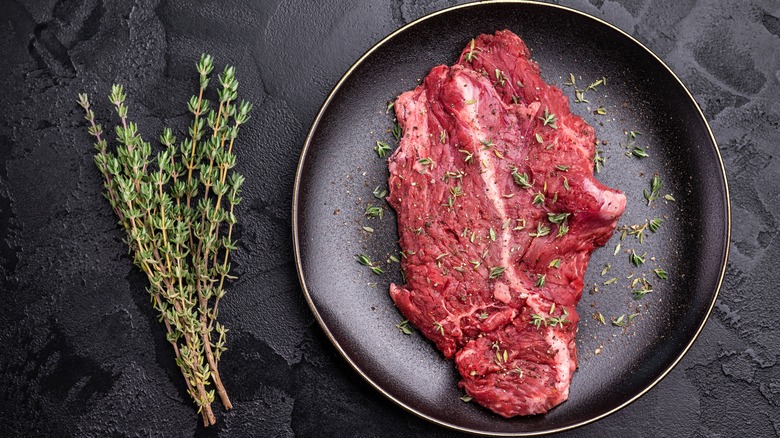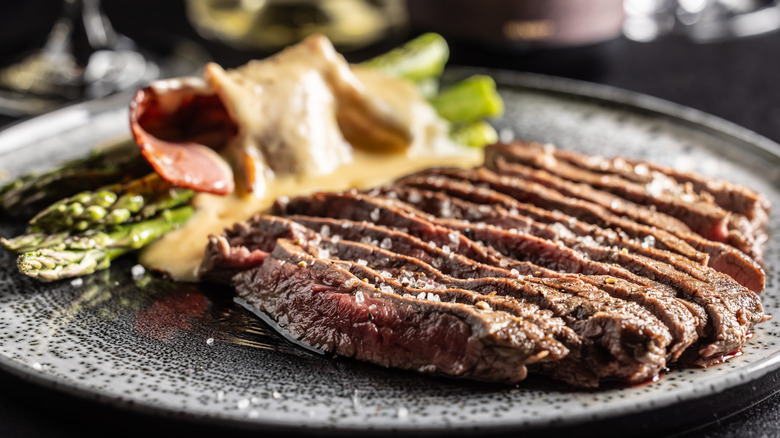The Absolute Best Way To Cut Hanger Steak
Any experienced home cook knows that the way you slice a steak can dramatically change the texture. Hanger steak, one of the most underrated cuts, is generous in size, well-marbled, and deeply satisfying, with a nutty edge that sets it apart. To get it right, always slice hanger steak against the grain.
For the uninitiated, the grain refers to the direction of the muscle fibers, which line up parallel to each other in every cut of steak, much like the growth lines in wood. These fibers show up clearly in tougher but more flavorful sections of beef, which include hanger steak. By slicing across them instead of with them, you shorten the fibers, turning what could be chewy into something supple and tender.
Cutting a hanger steak against the grain is a step that should always come after cooking, and only once the meat has had a short rest. That pause lets the juices redistribute, making for a more tender, juicy bite.
The best way to trim a hanger steak before it hits the heat
Perhaps the most important point when it comes to trimming raw hanger steak is removing the sinew. To see why this matters, you need to understand the cut's build. The hanger is a slender, V-shaped muscle with two branches of meat, split by a sturdy membrane running down its center that needs to be removed before cooking. You can, of course, have your butcher handle it. But if not, it's simple enough at home. You just need slice the center seam and remove it, thus creating two long steaks. You can then cut them into four steaks, if you so wish.
Once it's trimmed, a hanger steak ideally should be marinated. It not only allows the seasoning to sink in but also helps loosen the muscle fibers. Hanger steak should be seared at high heat, to your preferred doneness, although medium is recommended as the longer time on the grill allows tissue to further break down.

